- Author Jason Gerald [email protected].
- Public 2023-12-16 10:50.
- Last modified 2025-01-23 12:04.
Game Risk is a game that is different from other games. It's a fun game that you can casually play with friends, and it's also a serious strategy game with people who take it seriously all over the world. The goal of the game Risk is to conquer the world by controlling every area on the game board in the form of a world map. Since you can't take over the world in real life, why not just do it on a board game? Read on for a more detailed discussion of Risk game rules and strategies.
Step
Part 1 of 5: Basic Settings

Step 1. Understand the basic purpose of the game
The basic objective of the game is to conquer the world by conquering all the countries on the game board. You do this by "occupying every area of the game board and to do that you have to get rid of the other players," according to the game's manual. You win territory against other players in a dice roll game.
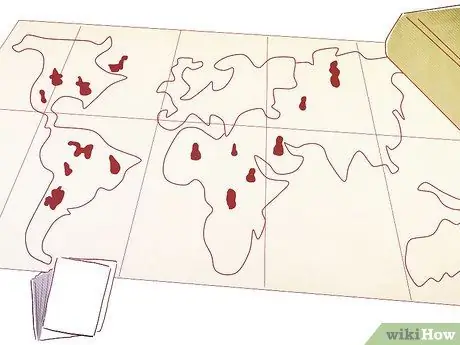
Step 2. Understand what is provided in the game
The Risk game features a collapsible game board, a card set of 72 cards, and various army pawns.
- The Risk board game has six continents, namely North America, South America, Europe, Africa, Asia, and Australia, as well as 42 countries.
- Soldiers in the game Risk are available in six basic colors, with different types of pawns, indicating the size of the army. Each army set has Infantry (representing one "army"), Cavalry (five "army"), and Artillery (ten "army").
- A card pack of 72 Risk cards should also be provided. The 42 cards are marked with the coats of arms of the country, as well as the emblems of infantry, cavalry and artillery. There are two "Free" cards, and 28 "Mission" cards available with a variety of Secret Missions. In addition, there should also be five dice (three red dice and two white dice).
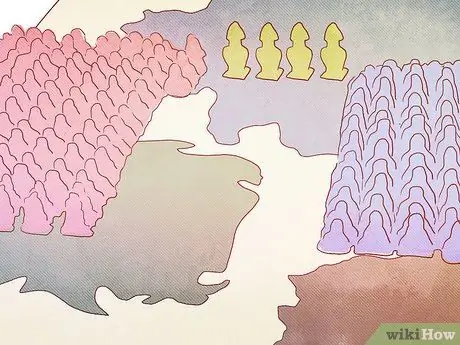
Step 3. Decide how many people will play
The total number of soldiers when you start the game depends on how many players there are:
- For six players, then each get 20 soldiers
- For five players, then each get 25 soldiers
- For four players, then each get 30 soldiers
- For three players, then each get 35 soldiers
- For two players, each gets 40 soldiers (may vary between editions)

Step 4. Set the initial region
This will determine the starting point for all players. Each region must have one "soldier" in that area at all times. There are two ways to define the starting region:
- Have each player roll a dice (Standard Rules). The player who rolls the dice and gets the highest score will select an open area and place his soldiers in that area. Alternating clockwise, each player will select an open area until all areas are occupied. Once the players have occupied all of the forty-two territories on the game board, the players place the rest of their army into the territories they have occupied as they see fit.
- Hand out a set of cards (Alternative Rules). Deal all cards, except the two Joker cards. Have each player place one of their soldiers in each area according to the cards they have. Do this in turns.
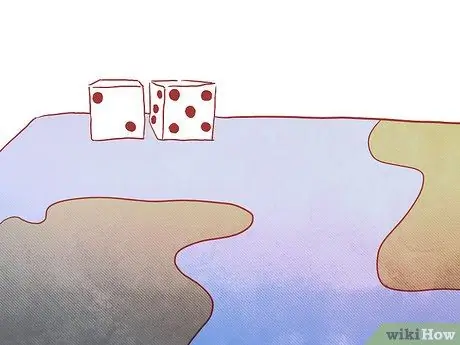
Step 5. Determine the order of play by rolling the dice
The player who gets the highest number starts the game, in clockwise order from the first player. The game starts after the order of play has been determined.
Part 2 of 5: Acquiring and Deploying New Soldiers
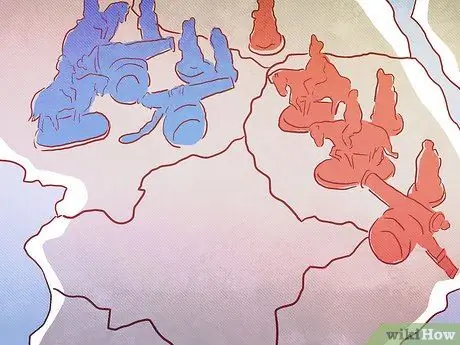
Step 1. Understand three phrases in a turn:
Get and deploy new armies, attack and defend. This section will focus on how new soldiers are assigned at the start of each turn and how a player can deploy those soldiers.

Step 2. Understand that each player can get back his army of any type he wants (infantry, cavalry, or artillery), as long as the value of the number of soldiers is the same
So if a player gets seven soldiers at the start of his turn, then he can get them by selecting seven infantry or one cavalry plus two infantry (which makes seven).
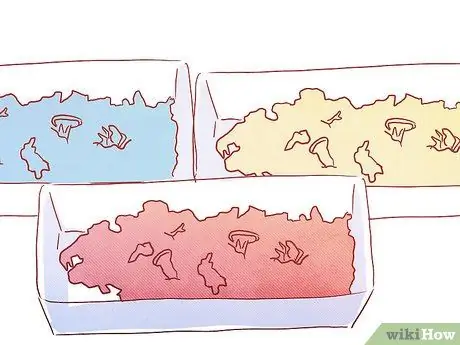
Step 3. Get new soldiers at the start of each turn
At the start of each turn, players receive additional soldiers. The number of additional troops is determined by the following:
- The number of territories controlled. For every three countries controlled, the player will get one additional army. For example, if you control 11 countries, you will receive three additional troops, and if you control 22 countries, you will receive seven additional soldiers.
- Is there a card submission. Cards can be turned over when you have three of a kind (for example, they have artillery) or when you have three types of soldiers (infantry, cavalry, artillery). For the first set of cards you submit, then you will receive 4 soldiers, then 6 soldiers for the second card set, 8 soldiers for the third card set, 10 for the fourth card set, 12 for the fifth card set, 15 for the sixth card set, and 5 additional soldiers for each subsequent set of additional cards. If you have five or more Risk cards at the start of your turn, then you must turn over at least one set of cards.
- Do control all the territory of a continent. For each continent that you completely control (there are no enemy soldiers on the continent), you will receive reinforcements of several armies. You will receive three soldiers for the African continent, seven soldiers for the Asian continent, two soldiers for the Australian continent, five soldiers for the European continent, five soldiers for the North America area and two soldiers for the South America area.
-
Notes:
if the number of soldiers you will receive at the start of your turn is less than three, round to three.

Step 4. Place the soldiers you receive at the start of your turn wherever your soldiers are, in any number
If you want, you can place one army in each area you control, or you can place all soldiers in one area. The choice is yours.
If at the start of your turn you turn over a set of cards for the territory you control, then you will receive two extra infantry. You must place the infantry in the area specified by the card
Part 3 of 5: Attack
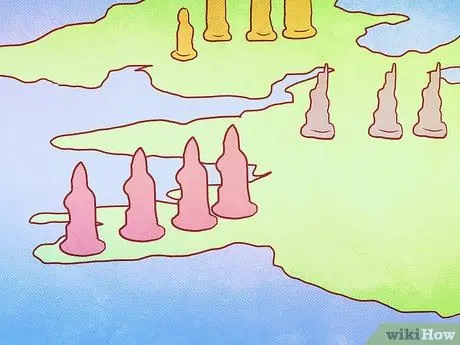
Step 1. Attack only other areas adjacent to the territory you control or the territory connected to your territory by sea
For example, you cannot attack India from the eastern part of the United States.
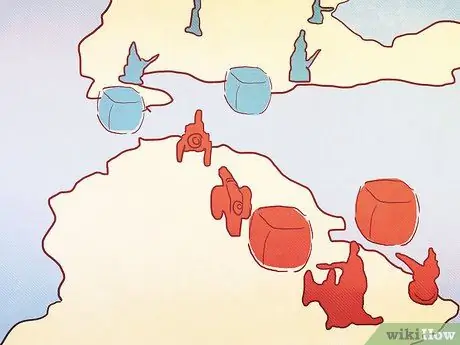
Step 2. Attack repeatedly from any of your territory to adjacent ones
You can attack the same area more than once, or you can attack different areas. You can attack the same area from the same adjacent position, or you can attack it from another adjacent position.
Understand that attacking is not mandatory. A player may choose not to attack at all during a turn, and only deploy his army
Step 3. State that you will attack
State your intentions out loud. For example, say, "I'm going to attack the eastern United States from the western United States."
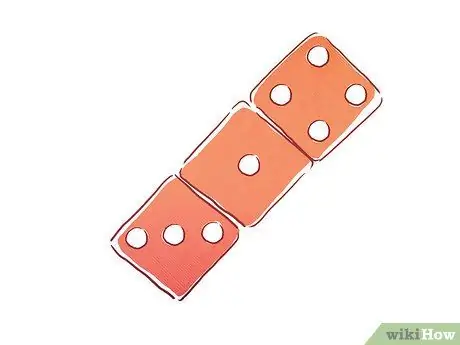
Step 4. Decide how many troops you will attack with
Since a territory must be occupied at all times, you must leave at least one soldier in the territory. The number of soldiers you use to attack will determine how many dice you get to throw when preparing to attack your opponent's territory.
- For one soldier, then use one dice.
- For two soldiers, then use two dice.
- For three soldiers, then use three dice.
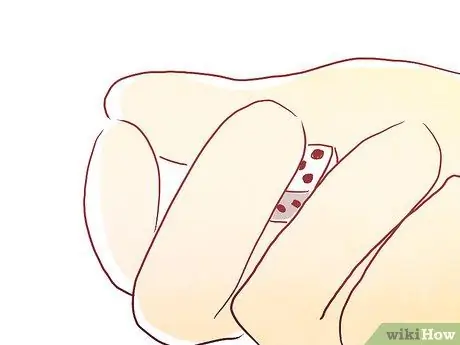
Step 5. Throw the dice
You roll up to three red dice, depending on the number of your troops. Defending players roll white dice equal to the number of troops in the territory they defend, with a maximum of two soldiers.
- Pair the highest red die with the highest white die, and pair the second highest red die with the second highest white die. If there is only one white die, match only the highest red die with the white die.
- Remove one of your soldiers from the attack area if the white dice is higher than or equal to the pair's red dice.
- Remove one of your opponent's soldiers from the attacked area if the red dice is higher than the white dice of its partner.

Step 6. If you manage to get rid of all the soldiers who are defending in the area you are attacking, occupy the area with at least the same number of soldiers as the number used in the attack
If you attack with three dice (or three soldiers), you must occupy newly captured territory with at least three soldiers, although you can choose to occupy territory with more soldiers, if you wish.

Step 7. If at the end of your turn you have conquered at least one territory, you get a Risk card
You cannot get more than one Risk card this way.
If you manage to get rid of all the enemies by destroying the last of his soldiers, you get all the Risk cards he has
Part 4 of 5: Survive
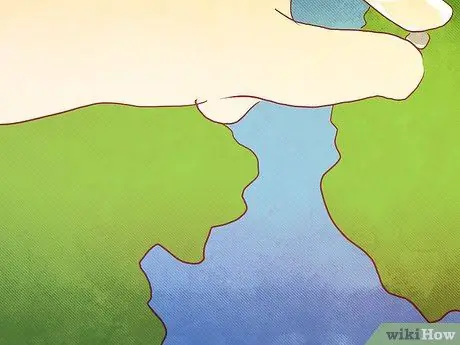
Step 1. Understand that you cannot move troops until your next attack
To keep your territory safe from attack during the opponent's attack phase, moving soldiers before ending their turn is an important strategy.
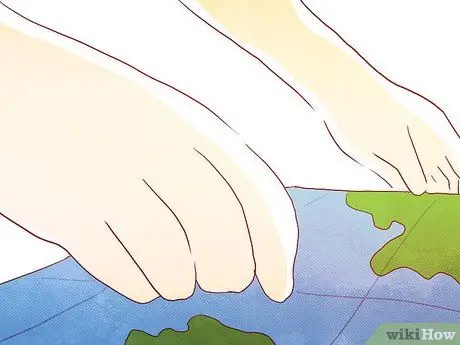
Step 2. Rearrange the game board
Move soldiers to a different area at the end of their turn. There are two rules about how you can do this:
-
Standard Rules:
Move any number of troops from an area to a nearby area that you control.
-
Alternative Rules:
You can move your army anywhere, as long as the starting area and objectives are reachable through a series of adjacent territories that you control.

Step 3. Continue the turn clockwise until there is only one player left
Part 5 of 5: Strategy
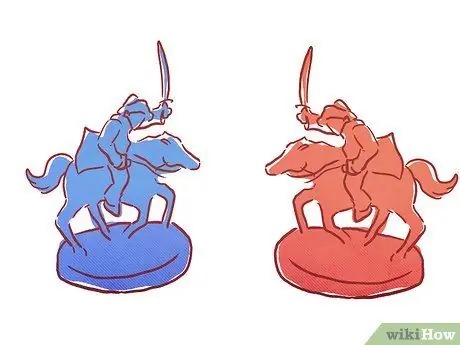
Step 1. Know the three basic strategies listed in the Risk rulebook
Risk is a strategy game, so it will reward players who use tactics and are smarter than their opponents. The three strategies given to players in the Risk rulebook include:
- Try to defend an entire continent to get bonus army reinforcements. Your strength is measured by army reinforcements, so getting as many army reinforcements as possible is a good strategy.
- Keep an eye on your borders for an increase in enemy troops which could mean an impending attack.
- Make sure your borders are well fortified against enemy attacks. Gather reinforcements along the border to make it harder for enemies to enter your territory.
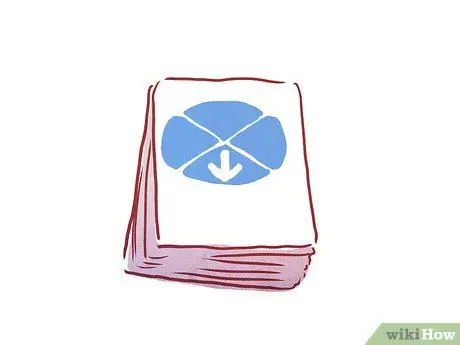
Step 2. Understand that speed is important
The difference in army strength is invaluable especially early in the game. This means you should try to trade your Risk card for army reinforcements early, when army reinforcements mean more. This difference in strength doesn't mean much at a later stage of the game.
Step 3. Understand the basics of dice fighting:
You will definitely lose more soldiers than your enemy unless you attack with more dice. Calculators such as the site https://armsrace.co/probabilities can help to assess whether you are in a favorable situation before striking a lot of areas. In all cases, don't attack until you run out of troops, but stop once you have fewer troops than the enemy.
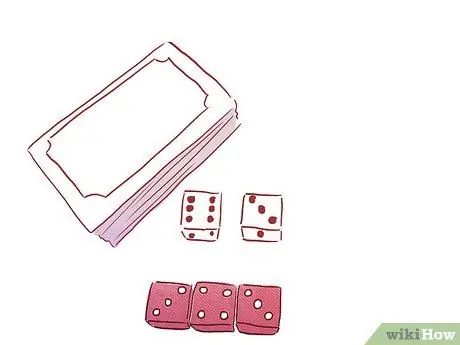
Step 4. Get rid of weak players who have a lot of Risk cards
Getting rid of weak enemies who have a lot of Risk cards has two advantages, namely the enemy will be eliminated and you will get additional cards from that player.
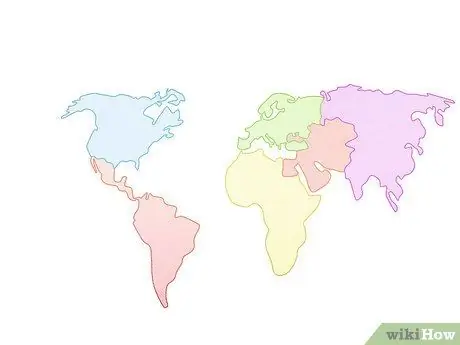
Step 5. Understand theories about continents
Players who regularly played Risk knew that certain continents could be more profitable to rule than others. Strategies on the continent include:
- Australian theory. Start with Australia and maintain power there. This will give you two army reinforcements each turn, and is only accessible to one region. Build an army and move through Asia when it starts to weaken.
- North American theory. Start with North America, stick with Europe and Asia. Descend into South America, break through Africa and move up. This is done with the assumption that Asia and Europe are at war with each other to expand their territory.
- African theory. Start with Africa, stick with Europe and South America. Move to South America, through North America and move to Asia via Alaska. This is done with the assumption that Asia, North America and Europe are at war with each other to expand their territory.
- Try not to start from Asia, as there are too many borders to strengthen and will quickly over-expand and scatter your armies.

Step 6. Consider maintaining a group of countries located on multiple continents
Defend the border and build your army. While you won't receive the army bonus from continent domination at the start of your turn, other players won't either. You'll need to keep your focus on building up your army so you can get rid of the other players when they scatter and weaken.

Step 7. Create allies
While this isn't described as a "rule" in the official book, make a pact with other players not to attack certain areas unless certain conditions are met. For example, "We will not expand into Africa until Alexander is out of the game." This makes it easier for you to concentrate your efforts elsewhere.
Tips
- There are several ways to play, and this is just one of them. There are other variations, for example, you choose a capital city and have to defend it. In another variation, you are given a mission card and must complete it.
- Once you have six cards, you must turn them over. This is to prevent people from holding cards until the profits are much greater.
- One of the cool things you can do is create your own game board.
- On most board games, different continents will be distinguished by different colors.
- Good territories to defend against are Madagascar, Japan, and Argentina, as they only have two borders, which means they're hard to attack, but if they're going to be attacked, you can provide reinforcements from nearby areas.
Warning
- Never leave only three soldiers on your border. This is as if asking a bigger force to come and attack you there because that area will be a weak point.
- At the start of the game, you might be tempted to pick a country spread across the board, but it's much more effective to focus on just one area.
- While having a few borders will make a location easy to defend, it will also make it harder for you to expand your territory from there.






